OKA9420 岡九四二零
‘OKA9420 岡九四二零’ is a site-responsive artwork that addresses why Malaya Singapore was selected as the venue for mass-production of Uji bombs (Bubonic Plague biological weapon) by Imperial Japan, during the occupation.
Uji bombs are filled with bubonic plague-infested fleas that had fed on contaminated rats. Climate in places like Japan, with seasonal winter weather, makes manufacturing of these weapons on a large scale impossible. On the contrary, tropical weather condition of Malaya Singapore with a year-round constantly high temperature and humidity, offered good yield when farming for fleas – the receptacle that spreads the bacterium. In other words, local tropical weather was used as a form of natural resource & weaponised.
Over a period of 6 days, our tropical temperature & humidity was captured using a thermohygrograph – an equipment that would have been used by the Japanese scientists when in Malaya Singapore, back in the 1930s to 1945. The weather charts were analysed based on the ideal temperature (27 to 30ºC) and humidity (65 to 80%) for the farming of fleas. The results are then transformed into a data-set that is used to control a spray paint station. It varies its duration and pressure of spray, based on the data that has been compressed into a 45 minutes cycle, connecting the work to the destructive plague – Black Death.
In collaboration with Mr Lim Shaobin (researcher)
Media: Paint, archival-print canvas, spray paint machine (electronics, electrical & mechanical components with acrylic vitrine)
Dimension: Canvas 60 x 180 cm each (total 6 canvases); Spray paint machine 400 (w) x 250 (d) x 230cm (h)
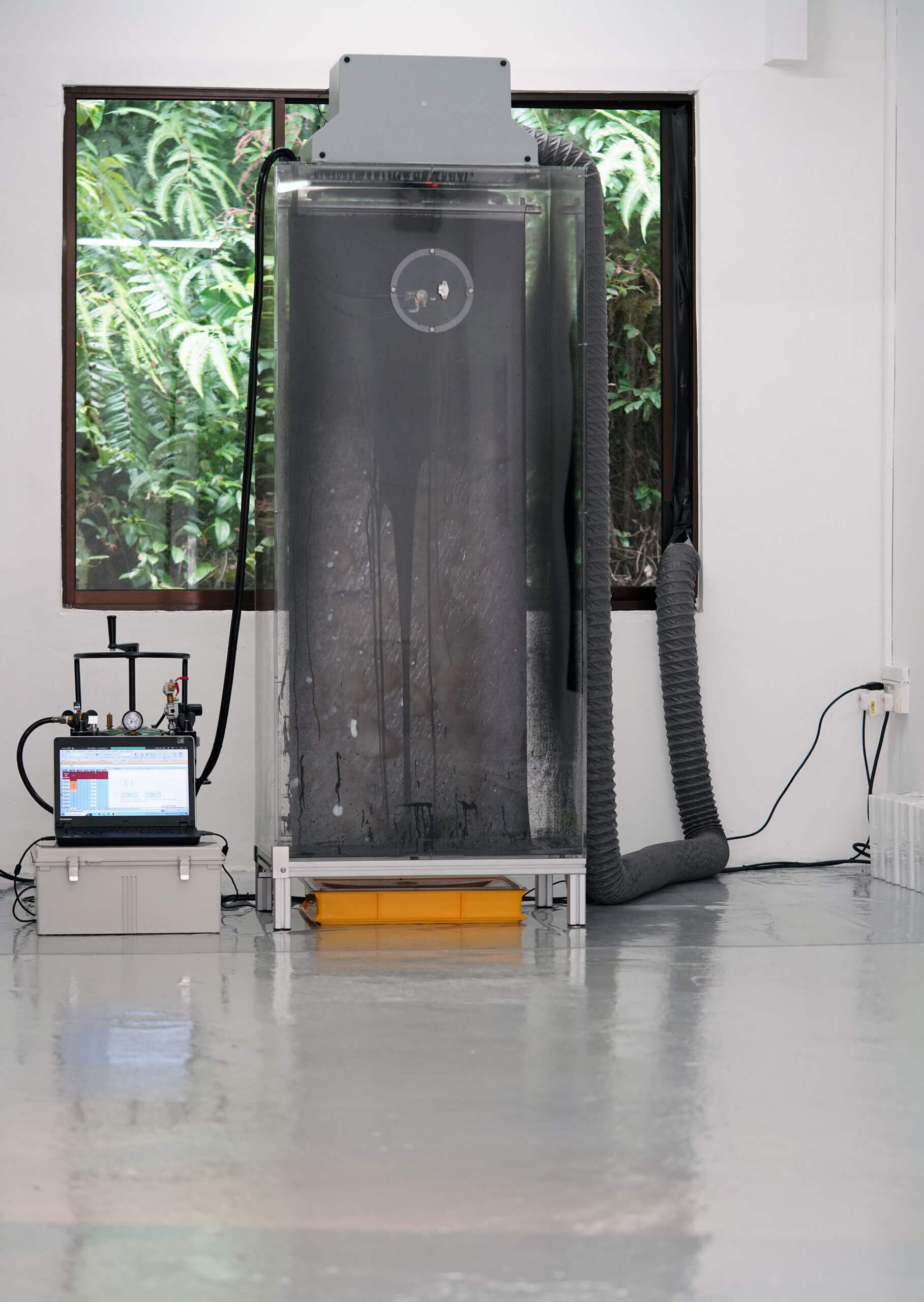

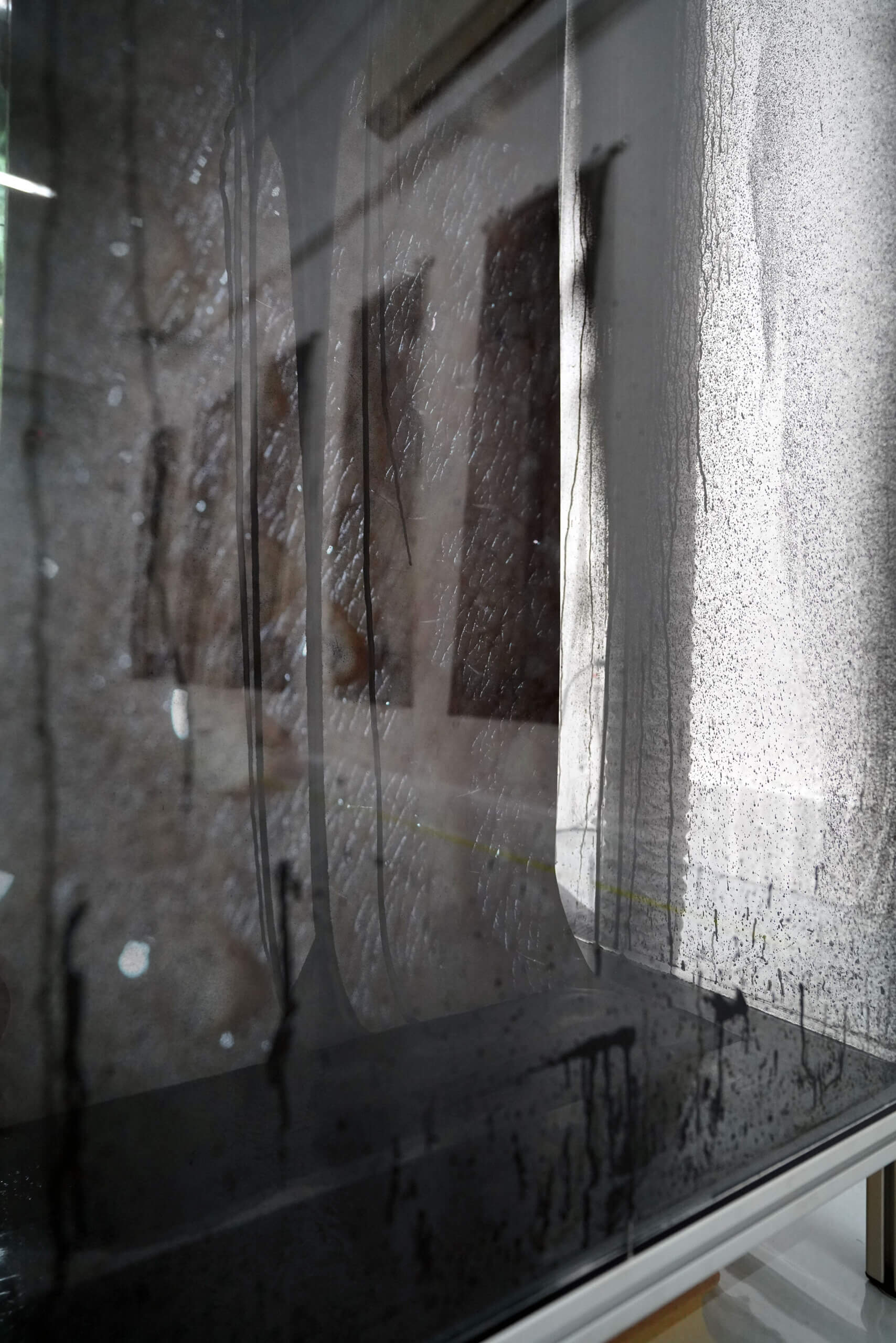
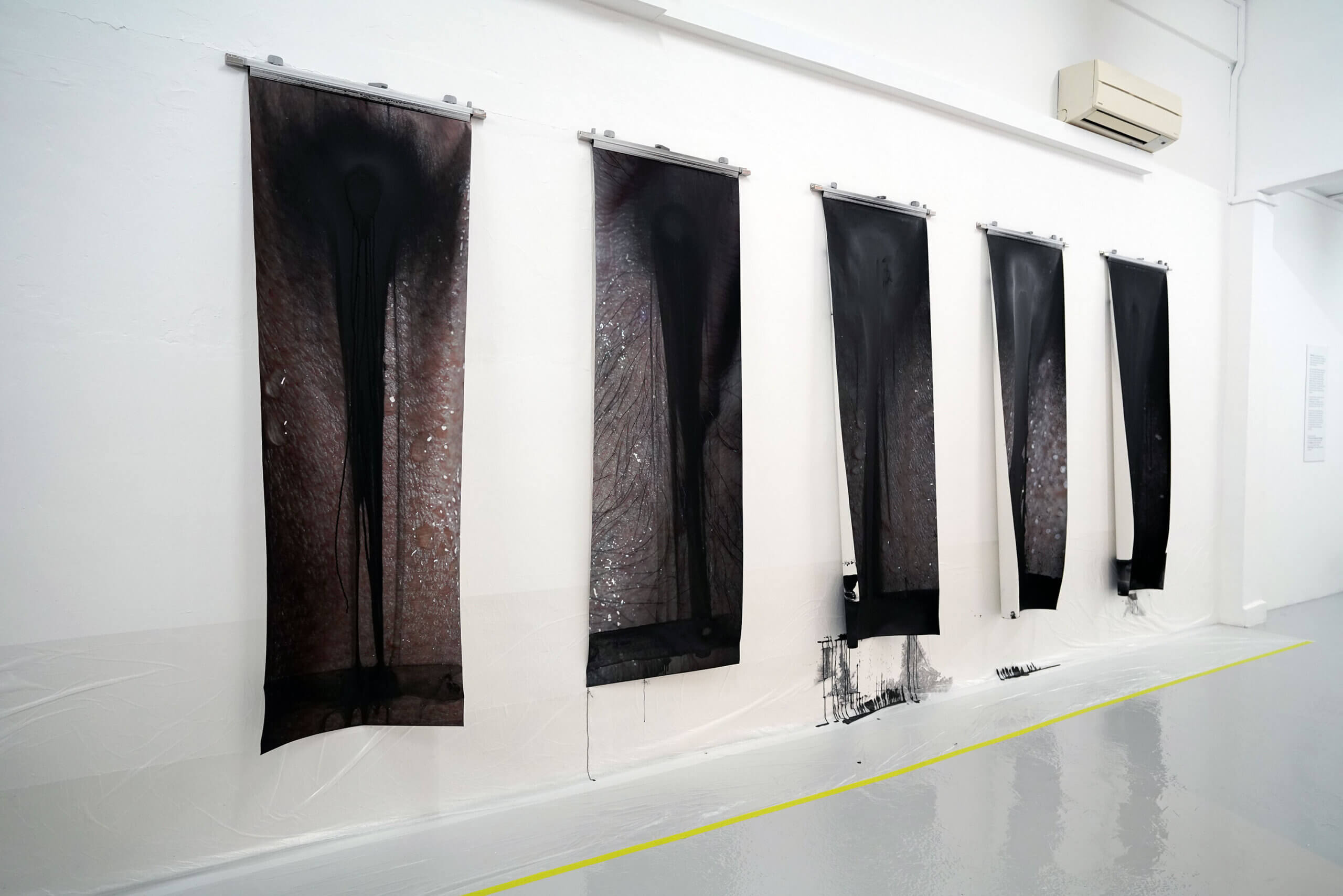
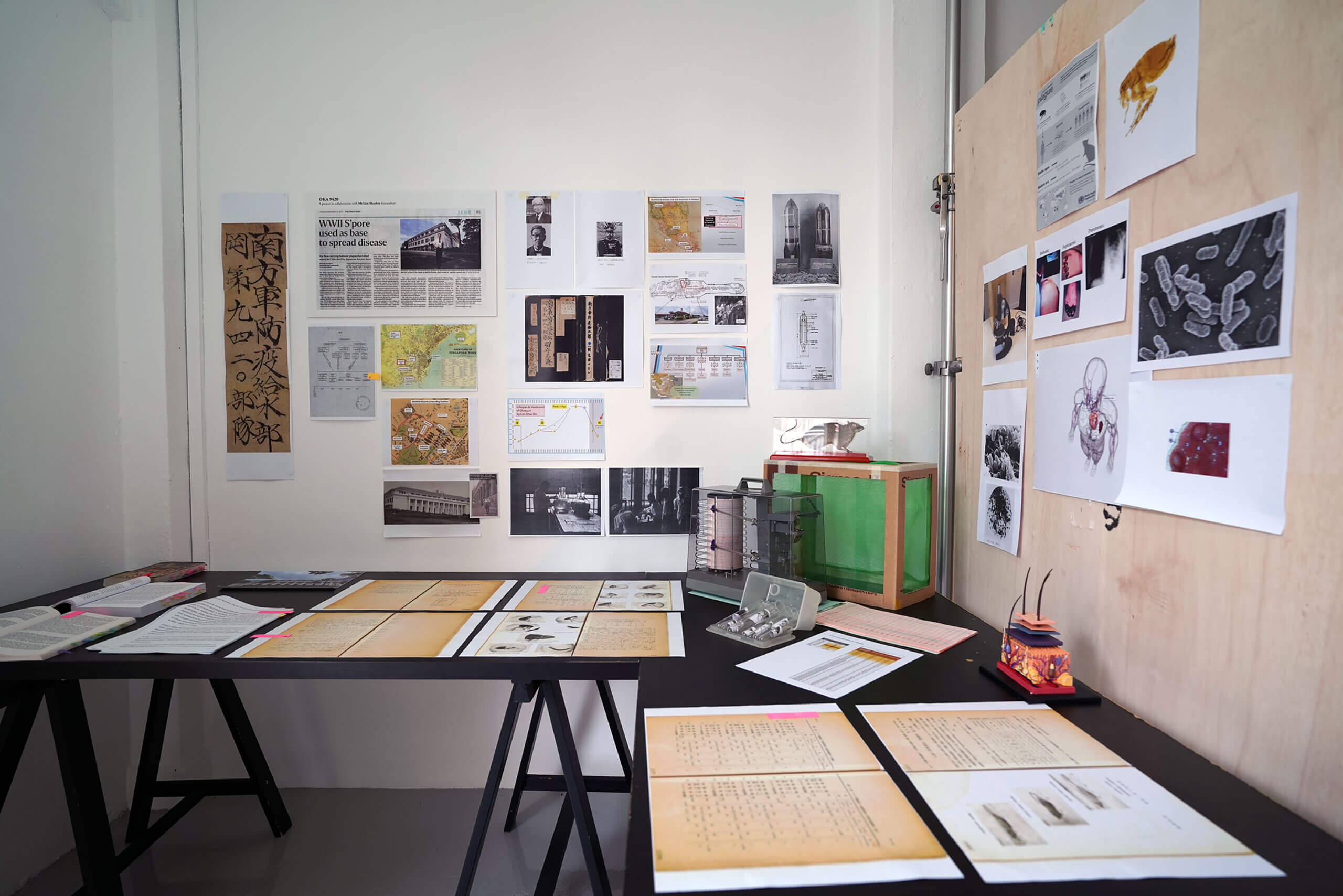
Documentation of reasearch, presented during open-studio
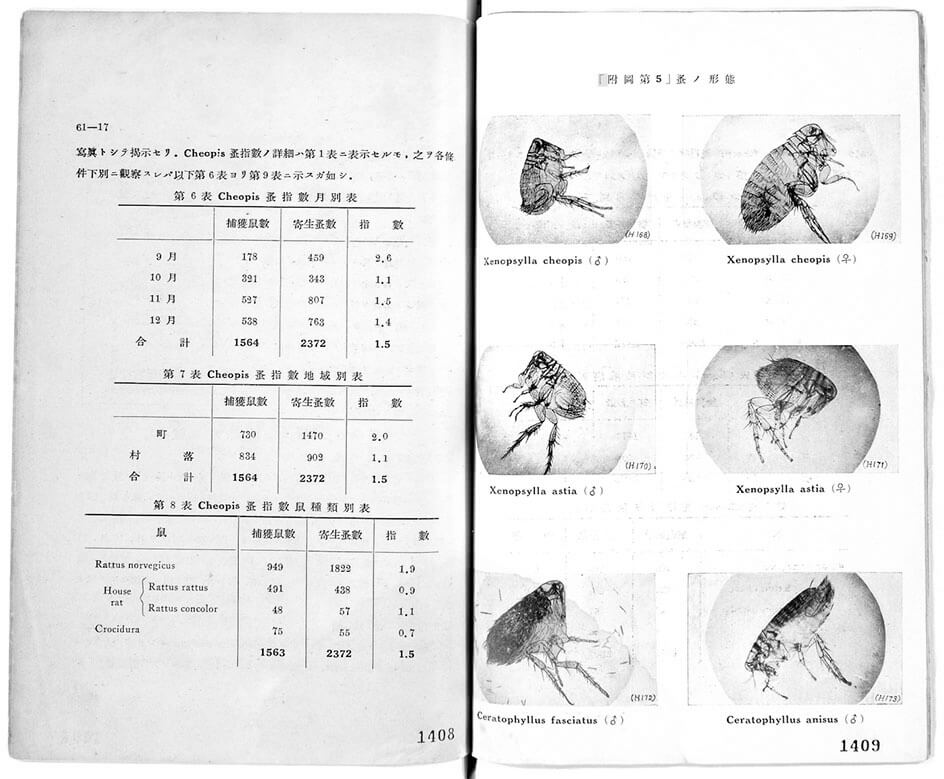
Image courtesy of Mr Lim Shao Bin
Southern Army Epidemic Prevention and Water Supply Department Report: C No.61, 'Investigation and study on the two inhabiting rat type in the southern region; The second report on the ecology of the two types.', by unit OKA9420, published in 1941.
Email: antchin69@hotmail.com | IG: anthonychin.art